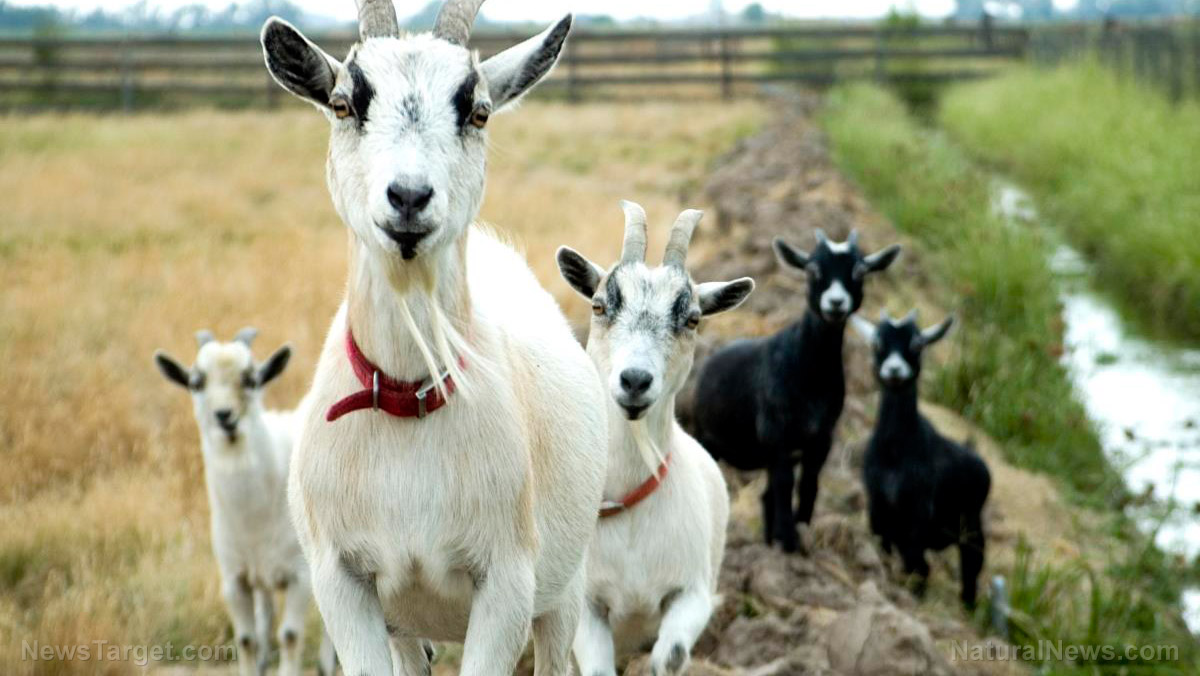It’s all in the call: Goats can distinguish emotional states from other goats based on their vocal calls
03/13/2020 / By Arsenio Toledo

Humans can identify and express emotions through the sound and tone of their voice – and it turns out that some animals are capable of this, too. A recent research suggests that goats can detect emotional changes in other goats simply by listening to their vocal calls.
Researchers from Queen Mary University of London (QMUL) measured both physiological and behavioral changes in goats, and found that when the emotion in a goat’s call changed, the chances of other goats looking toward the source of the sound increased. This suggests that these animals can distinguish the emotional states of other goats through the calls.
The researchers believe that this discovery has important implications on how goats and other domestic animals, particularly livestock, are cared for, as their study sheds insight into the evolution of emotional perception in animals.
“Despite its evolutionary importance, social communication of emotions in non-human animals is still not well understood,” said lead author Luigi Baciadonna. “Our results suggest that non-human animals are not only attentive but might also be sensitive to the emotional states of other individuals.”
Goats exhibit emotional intelligence
For the study, the researchers recorded the goats’ bleats that communicated either positive or negative emotions. They placed a goat in a pen, and made it listen to these calls in random orders through a loudspeaker.
Baciadonna and his team then recorded how the goat responded to the calls by monitoring in which direction it looked, and how long it paid attention to the call. They also had instruments to measure the heart rate and cardiac activity of the test goat, using a non-invasive BioHarness Physiology Monitoring System, which the test goat wore around its chest.
By measuring the goat’s heart rate, the researchers could accurately assess the emotional states of the test goat as it listened to the calls. They found that there was a greater variability in heart rate when the goat heard positive bleats.
The researchers also controlled for other variables, such as the emotional states of both the caller and the receiver. Furthermore, they only used “contact calls,” which conveyed important emotional information, so that the reactions of the goat in the pen would be solely dependent on the emotions encoded within the calls.
Baciadonna and his team concluded that their research provides evidence for the ability of animals to distinguish between different emotions through calls, and that “emotionally-valenced calls” have a significant impact on their behavior (looking at the source of the call) and physiology (heart rate variability).
They further wrote that their study may suggest that other animals may also be sensitive to the emotional states of other individuals. For example, this is also the case for dogs, who go through periods of stress whenever their owners are under strain. This suggests that many animals around the world may be more emotionally intelligent than common understanding gives them credit for.
Many social animals such as goats may not always see other individuals in their group. Therefore, it may be an evolutionary advantage for animals to understand the emotional content of calls from other animals within their species. (Related: “Are they dreaming?” Recent footage shows an octopus changing color while it SLEEPS.)
The researchers believe that their study will help farmers, particularly livestock owners, learn how to better care for their animals.
This study sheds light on the emotional health of animals. If you want to learn more about how to better look after your pets, head over to PetHealth.news.
Sources include:
Tagged Under: animal intelligence, animal science, animals, breakthrough, discoveries, domestic animals, emotional intelligence, Emotions, farm animals, goats, livestock, pet health, research
RECENT NEWS & ARTICLES
COPYRIGHT © 2018 BREAKTHROUGH.NEWS
All content posted on this site is protected under Free Speech. Breakthrough.news is not responsible for content written by contributing authors. The information on this site is provided for educational and entertainment purposes only. It is not intended as a substitute for professional advice of any kind. Breakthrough.news assumes no responsibility for the use or misuse of this material. All trademarks, registered trademarks and service marks mentioned on this site are the property of their respective owners.



















